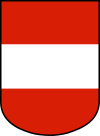Banking in Austria
The Oesterreichische Nationalbank, Austria's central bank, was founded in 1816. After being taken over by the German Reichsbank in 1938, it was re-established on July 3, 1945. The bank is a corporation with capital shares fixed by law at $150 million; 100% of the shares are, by law, held by the Austrian government. The central bank and the bank of issue, it preserves the domestic purchasing power of the Austrian currency and its value in terms of stable foreign currencies, and controls external transactions affecting the balance of payments. It also sets reserve requirements for credit institutions.
Banking system
The Austrian banking system also includes joint-stock banks, banking houses, and private banks, as well as postal savings banks, private savings banks, mortgage banks, building societies, and specialized cooperative credit institutions. The most important credit institutions are the joint-stock commercial banks, the two largest of which, the Creditanstalt-Bankverein and the Österreichische Länderbank, were nationalized in 1946; shares representing 40% of the nominal capital of the two were sold to the public in 1957.
On January 12, 1997, the coalition partners, after long and intensive negotiations, agreed to sell Creditanstalt-Bankverein to the indirectly state-owned Bank Austria, which is dominated by the senior coalition party, the Social Democratic Party (SPO). The sale created a financial and industrial giant in Austria, which holds about one-quarter of the assets of all financial institutions.
The International Monetary Fund reports that in 2001, currency and demand deposits — an aggregate commonly known as M1 — were equal to $52.9 billion. In that same year, M2 — an aggregate equal to M1 plus savings deposits, small time deposits, and money market mutual funds — was $171.2 billion.
Stock exchange
A special decree of Empress Maria Theresa (August 1, 1771) provided for the establishment of a stock exchange in Vienna. From the mid-19th century to the beginning of World War I, it was the main capital market of middle and eastern Europe, and from 1918 to 1938, it had continuous international importance as an equity market for the newly founded nations originating from the former monarchy. The exchange also deals in five Austrian and seven foreign investment certificates. The Austrian Traded Index has grown steadily in the past few years, growing 8.71% in 2002, and averaging a growth rate of 10.15% in the past five years. Market capitalization as of December 2004 stood at $85.815 billion, with the index up 57.4% at 2,431.4 from the previous year. There were 99 companies listed on the Wiener Borse AG in 2004.
References
